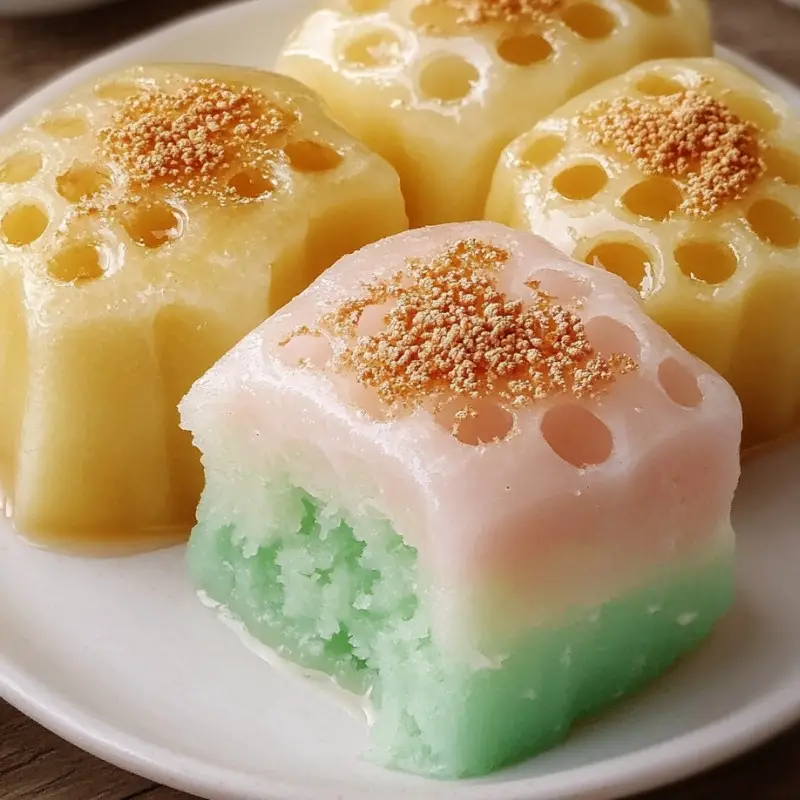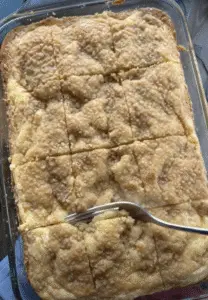
Introduction
Bánh Bò Hấp, a traditional Vietnamese dessert, captures the essence of Southeast Asian culinary art with its simple yet exquisite flavors. Known as the steamed honeycomb cake, its texture is both intriguing and delightful, offering a soft, airy bite that is subtly sweet. The harmonious combination of rice flour and coconut milk creates a dish that stands out in Vietnamese cuisine. This cake is not only a treat for the taste buds but also a cultural representation of Vietnam’s rich food history.
Detailed Ingredients
The primary ingredients of Bánh Bò Hấp are accessible and affordable, making it an easy-to-prepare dessert in any kitchen. To make this wonderful treat, you will need the following:
– Rice Flour: The base ingredient responsible for the cake’s unique texture.
– Tapioca Starch: Helps to achieve the characteristic chewy texture.
– Coconut Milk: Provides richness and a creamy flavor to the cake.
– Sugar: Adds sweetness, enhancing the flavors of the other ingredients.
– Active Dry Yeast: Offers rise to the cake, creating the signature honeycomb effect.
– Salt: Balances sweetness and enhances overall flavor.
– Warm Water: Helps activate the yeast.
– Vegetable Oil: Used for greasing to prevent sticking.
– Pandan Extract or Food Coloring (optional): For aroma and a hint of color.
Prep Time, Cook Time, Total Time, Yield
Creating Bánh Bò Hấp is a relatively quick process in terms of active preparation, though it does require time for rising.
– Prep Time: 15 minutes
– Cook Time: 20 minutes
– Total Time: 2 hours 35 minutes
– Yield: Approximately 8 servings
Detailed Directions and Instructions
The process of making Bánh Bò Hấp involves straightforward steps, but attention to detail is crucial for achieving the desired texture and flavor.
1. Begin by dissolving sugar and yeast in warm water within a small bowl. Allow it to rest for about 10 minutes or until the mixture becomes foamy. This step is essential for activating the yeast, which will contribute to the cake’s rise and texture.
2. In a large mixing bowl, combine the rice flour, tapioca starch, and salt. Gradually incorporate the coconut milk, stirring continuously until a smooth batter is formed.
3. Integrate the yeast mixture into the flour mix. Stir well until the ingredients are fully integrated. If using pandan extract or coloring, add a few drops at this stage for an aromatic and aesthetic appeal.
4. Cover the bowl with a clean cloth and allow the batter to rest in a warm environment for 2-3 hours. This resting period enables the batter to ferment, bubble, and double in size, which is key to attaining the honeycomb texture.
5. Prepare small ramekins or a large steaming tray by lightly greasing them with vegetable oil to prevent sticking during the steaming process.
6. Gently stir the batter to distribute the bubbles evenly. Pour the batter into the greased containers, filling them halfway to allow expansion as they steam.
7. Heat a steamer on medium-high until the water is boiling. Carefully place the ramekins or steaming tray inside.
8. Allow the cakes to steam for 15-20 minutes. Check for doneness with a toothpick, which should come out clean if the cake is ready.
9. Carefully remove the cakes from the steamer and let them cool slightly. Once cooled, gently remove them from the molds.
10. Enjoy Bánh Bò Hấp either warm or at room temperature as a delightful snack or dessert.
Notes
– The key to achieving the honeycomb texture lies in proper fermentation of the batter. Ensure the environment is warm enough to allow the yeast to activate effectively.
– To prevent over-steaming, check the cakes towards the end of the cooking time to maintain their light texture.
– Pandan extract adds a unique fragrance and flavor that complements the coconut milk, but it is optional.
Cook Techniques-FAQ
1. How do I know if my batter has fermented enough?
Look for a doubled size and a bubbly surface in your batter. A warm and undisturbed location will promote proper rising.
2. Can I substitute coconut milk with another type of milk?
Coconut milk is essential for the traditional flavor of Bánh Bò Hấp. Substituting it may change the taste significantly, although in a pinch, whole milk could be used for a different variation.
3. What should I do if the cakes are dense instead of airy?
Ensure that the yeast is fresh and that the batter has adequately fermented. A dense cake typically results from under-proofing or inactive yeast.
Conclusion
Bánh Bò Hấp is more than a dessert; it’s a cultural experience that invites the vibrant flavors of Vietnam into your kitchen. Its simple ingredients and straightforward process make it an approachable recipe for both novice and experienced cooks. The cake’s unique texture and the fragrant aroma of coconut milk create an unforgettable culinary journey, whether enjoyed alone or shared with others.
More Recipes Suggestions and Combination
For those interested in exploring more of Vietnamese cuisine, consider complementing Bánh Bò Hấp with other delightful treats such as Bánh Chuối (banana cake) for a variety of flavors. Pairing with Vietnamese coffee or a light jasmine tea can enhance the overall experience. The simplicity and richness of these recipes highlight the exquisite flavors inherent in Southeast Asian cooking, perfect for creating an authentic Vietnamese dessert experience at home.

Bánh Bò Hấp
Ingredients
Method
- Dissolve sugar and yeast in warm water in a small bowl; allow it to rest for about 10 minutes until foamy.
- In a large mixing bowl, combine rice flour, tapioca starch, and salt. Gradually incorporate coconut milk while stirring continuously until a smooth batter is formed.
- Integrate the yeast mixture into the flour mix and stir well until fully combined. If using pandan extract or coloring, add it now.
- Cover the bowl with a clean cloth and let the batter rest in a warm environment for 2-3 hours to ferment and double in size.
- Grease ramekins or a large steaming tray with vegetable oil to prevent sticking.
- Gently stir the batter to distribute bubbles evenly and pour into the greased containers halfway.
- Heat a steamer on medium-high until water is boiling. Carefully place ramekins or steaming tray inside.
- Steam for 15-20 minutes, checking for doneness with a toothpick.
- Remove from the steamer and let cool slightly before gently removing from the molds.
- Serve warm or at room temperature.




